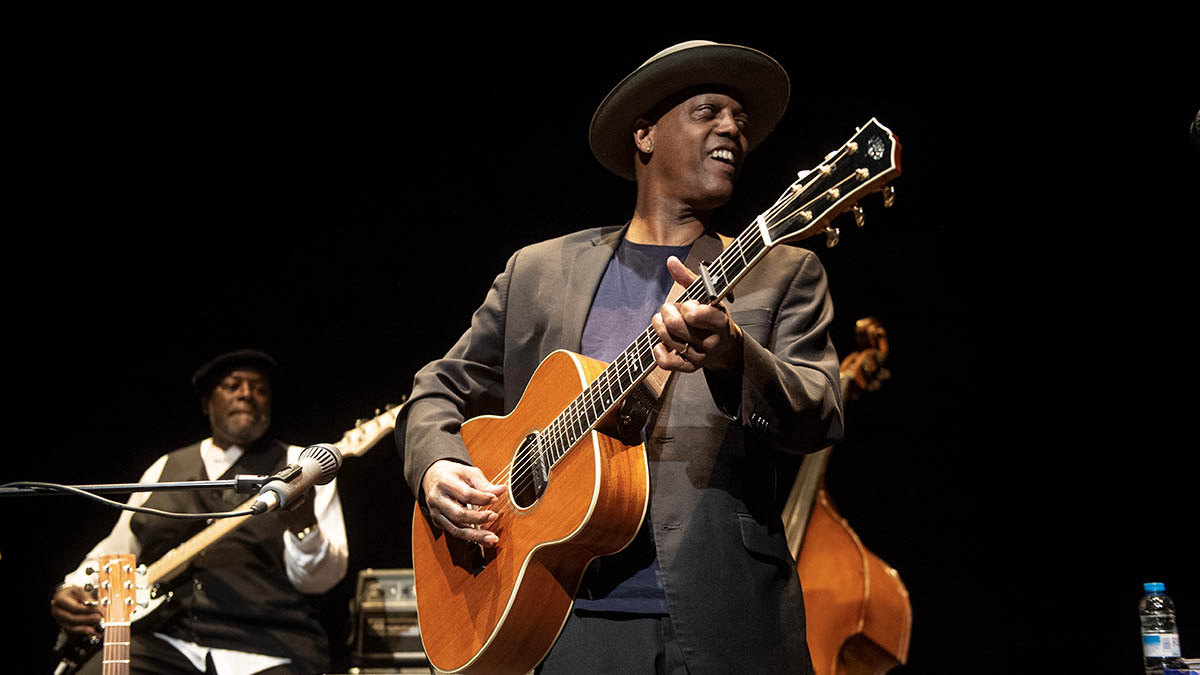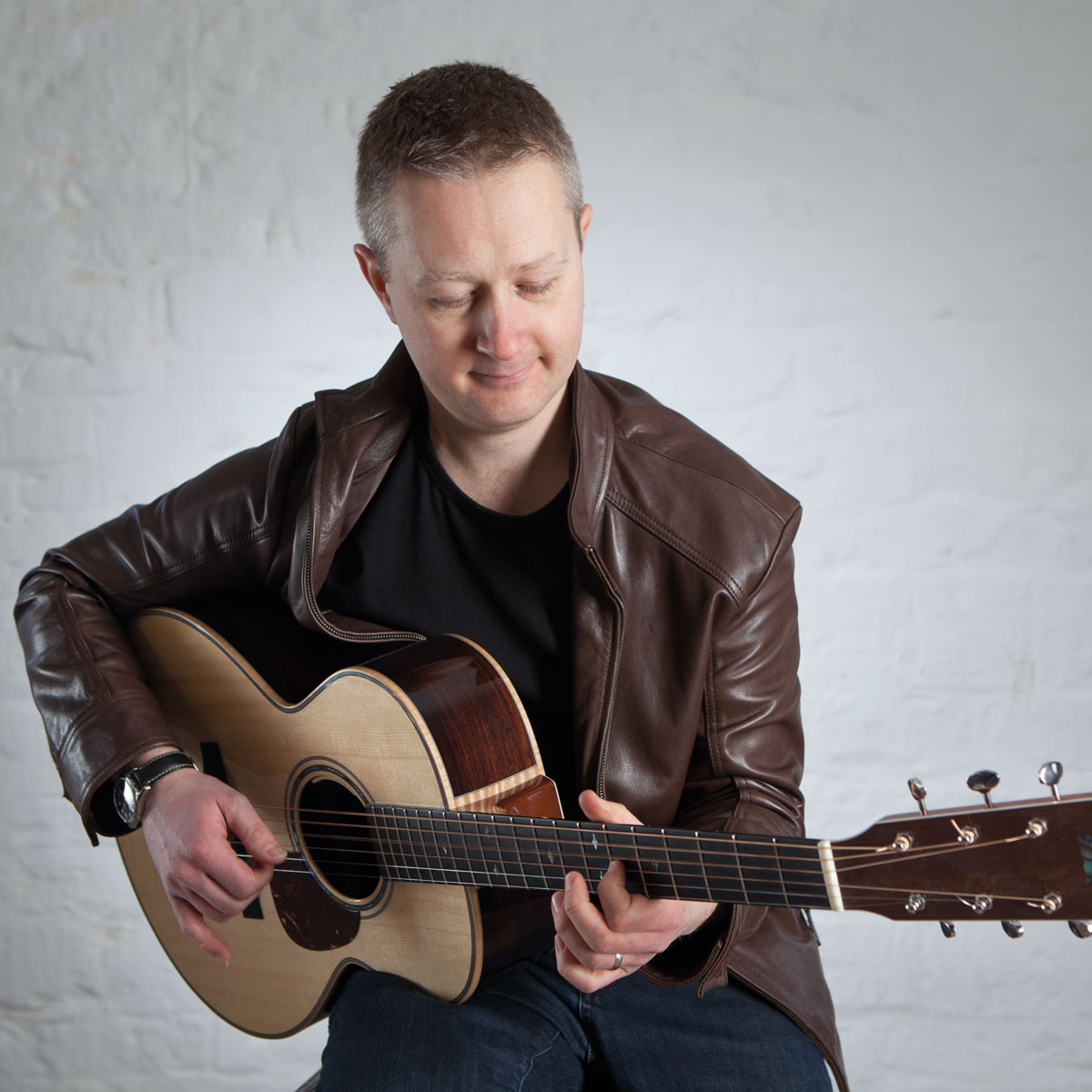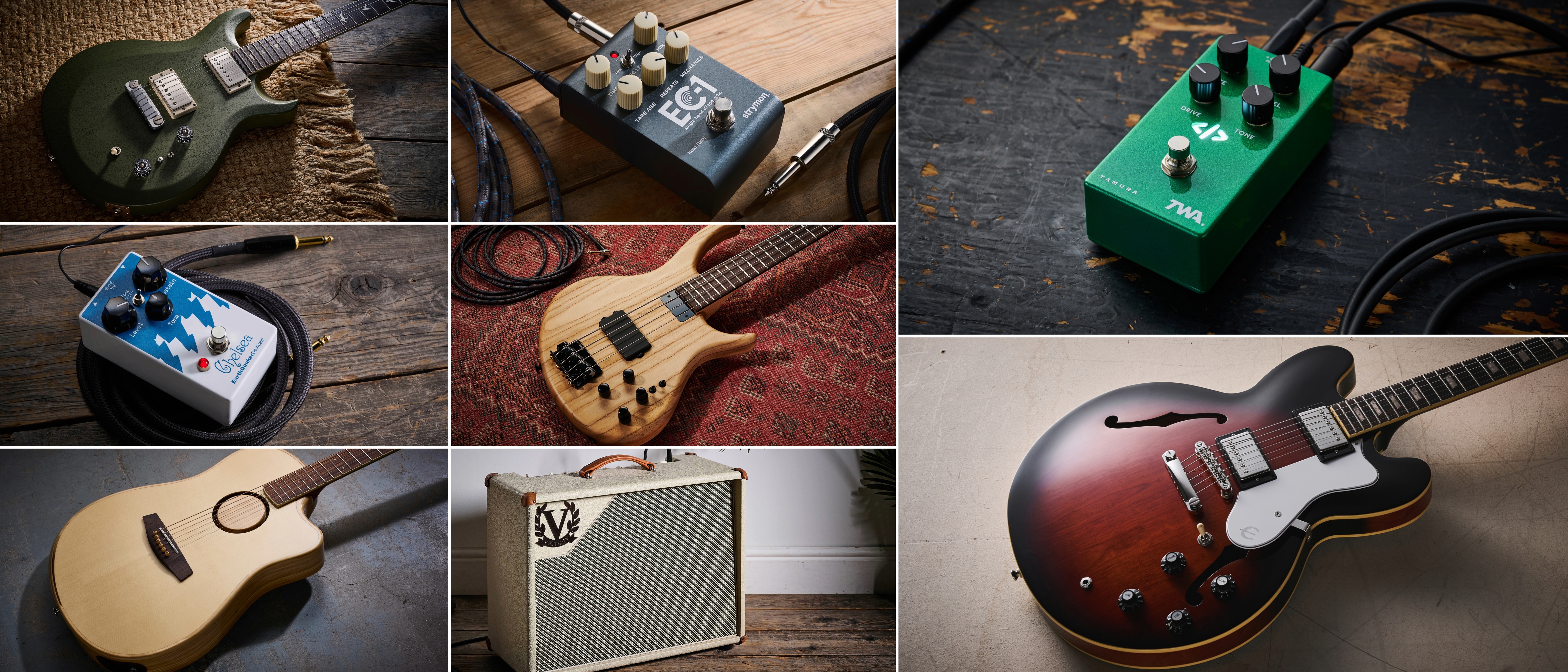Your acoustic blues playing will come on leaps and bounds with new fingerpicking patterns – here are 10 you need to know
Ditch the pick and dive into these fingerpicking style guitar lessons on some of blues guitar's finest fingerstylists, including Eric Bibb, Rory Gallagher and Leo Kottke

The world of acoustic blues guitar fingerpicking has a rich heritage dating back to the late 19th century. Over that time techniques and patterns have been developed and refined, tunings explored and styles generated.
In this feature you’ll discover how 10 great players found their own voice with acoustic blues. Some, like Blind Blake, were pioneers of the style while others have learned from the forefathers and discovered their own take on the genre.
Fingerstyle blues developed in America in the late 19th and early 20th century. Virtuoso pickers were inspired by the sound of ragtime piano players and set about trying to mimic the approach on acoustic guitar.
The result is challenging, since you must coordinate basslines, chords and melodies simultaneously at varying tempos. Legends like Robert Johnson and Blind Blake would then use this approach to accompany their vocals - if the guitar playing wasn’t hard enough then try singing along to it!
There are many sub genres within fingerstyle blues, from the uptempo, harder ragtime sound of the early players to the softer, folk blues sound of artists from the 1950s to the 1960s.
Some players stripped the sound back to feature a simple bassline and melody approach while others allowed altered tunings to do more of the work, letting them play out of chord shapes with simple modifications to fingerings.
When learning this style, aim to separate each voice so you are aware of what it’s doing and which finger is producing the sound. For example, you may try isolating a bassline and then working on picking it with just the thumb.
All the latest guitar news, interviews, lessons, reviews, deals and more, direct to your inbox!
One of the main challenges with the style is syncopation, notes that don’t fall on the beat. Playing on the ‘and’ of a beat after a bass note really creates the illusion of two instruments playing at once, and at the more challenging end some players will play offbeats with the 16th-note subdivisions – if you are counting ‘1 e + a’ then this means aiming for the ‘e’ and the ‘a’.
Finally, don’t be afraid to go for a big ‘raw’ sound with lots of attack. Authentic acoustic blues is loud and sometimes even brash, so dig in but make sure you never lose sight of the all-important groove!
Technique focus: Learn to syncopate
Each artist has their own take on blues fingerstyle, but all share the core techniques of independence between the thumb and picking fingers, and the ability to play syncopated licks and melodies (off the beat). The main challenge is doing so while keeping the groove in place – not too rigid with a slightly lazy feel but not out of time either!
Counting out loud really helps – the thumb keeps the beat in place so count 1-2-3-4 with each thumbstroke, then start to feel how the melodies can fit either on the beat or on the ‘and’ of the beat.
A great tip is to start very slowly so you are extending the gap between each beat; this will help you place the syncopated notes. An added benefit of this approach is that you’ll ultimately find the placement of syncopated 16th notes easier.
Get the tone
You’ll see a wide array of acoustics playing this style, from the obvious Martins and Gibsons to resonators or Seasick Steve’s three-string creations. Purists may gravitate to the smaller-bodied models that the Delta legends used to get that raw, vintage sound. Smaller models give a faster, snappier response while a dreadnought will give you a bigger sound.
Example 1. Blind Blake
A fingerstyle blues pioneer, Blind Blake’s fiery style is challenging to say the least. A master of the Piedmont style, he only recorded between 1926 and 1932 but changed the shape of fingerstyle blues for everyone who followed.
His playing is full of syncopated, offbeat melody lines and challenging rhythmic phrases so pay particular attention to the triplet lines in this example as they are capable of catching many a fingerpicker off guard!
Example 2. Woody Mann
You may not have heard of Woody Mann, but he was a true master of the fingerstyle blues genre and won many fans through his instructional materials and solo albums – he even taught Paul Simon some of the elements of fingerstyle blues!
Mann studied at the source, taking lessons from Reverend Gary Davis and performing with Son House and Bukka White. If you want to go further in this style then his books and video lessons are a must.
Example 3. Corey Harris
After a career in teaching, Corey Harris embarked on a life as a blues musician in the early 1990s when he was discovered by producer Larry Hoffman. Initially recording covers of artists like Fred McDowell, Muddy Waters and Charley Patton, White found his own voice on his album, Fish Ain’t Bitin’.
Harris has spent years travelling and performing in Africa and you can hear this in his rhythms, influenced as much by artists like Ali Farka Toure as the Delta blues legends.
Example 4. Seasick Steve
Steven Wold, better known as Seasick Steve, has lived the somewhat itinerant life of many of the classic Delta bluesmen. His heritage dates back to the 1960s when he worked as a sideman to Lightnin’ Hopkins.
A long and varied career has seen him work as a singer, guitarist, engineer, studio owner and even a paramedic. He broke through in the mid 2000s when his groove-laden style performed on homemade instruments caught the public’s attention.
Example 5. Kelly Joe Phelps
Kelly Joe Phelps actually started his career as a jazz musician inspired by artists like Miles Davis and John Coltrane. However, hearing artists like Mississippi Fred McDowell converted him to blues and he became one of the leading acoustic blues artists of his generation.
Phelps fused jazz and blues vocabulary. Even more staggering was his proficiency as a lap slide player. If you haven’t seen him perform like this before then prepare to be amazed!
Example 6. Keb' Mo'
Although often described as one of the ‘new generation’ of acoustic blues players, Keb’ Mo’’s career actually started in the early 1970s as a sideman and songwriter for A&M records.
Acoustic blues came to the forefront of his playing in the early 1990s with Robert Johnson being a primary influence. This example demonstrates the lovely folky-blues side of his playing with some sophisticated chords along the way that hint at his seasoned songwriting experience.
Example 7. Eric Bibb
Eric Bibb’s early life saw him surrounded by an illustrious cast of musicians. His father was a musical theatre singer, his uncle was John Lewis, pianist in The Modern Jazz Quartet and his godfather was the legendary Paul Robeson!
He actually spent time studying psychology and Russian before a move to Europe got him performing and writing regularly. His influences are wide-ranging, but from acoustic blues he particularly draws upon Bukka White.
Example 8. Tommy Emmanuel
While Tommy is best known as a quick-fire Travis picker, the Australian acoustic superstar is a huge fan of the blues, be it the electric style of Stevie Ray Vaughan or the acoustic fingerpicking of Doc Watson and many more.
As you’d expect, Tommy’s acoustic blues playing is full of challenging chords and lightning fast licks, so I’ve simplified the phrases here to show you some of his typical chord shapes and syncopations.
Example 9. Rory Gallagher
The Irish bluesman is mostly associated with his Strat, AC30 and Bassman and explosive electric blues playing but he was also a stunning acoustic bluesman. As acoustic blues was close to his heart he knew the style inside out being influenced by artists like Blind Boy Fuller and Big Bill Broonzy.
He predominantly used hybrid picking on acoustic but there’s footage of him playing fingerstyle. This example shows how syncopation is key to the fingerstlye blues style.
Example 10. Leo Kottke
Inspired by Mississippi John Hurt, Kottke developed his style on both six and 12-string acoustics. Kottke plays with a more classical influenced technique and often uses hybrid (pick and fingers) playing.
The result is a somewhat cleaner style than the often raw sound of the Delta blues pickers. Altered tunings form a large part of his playing and this example shows how a lot can be achieved in open G with relatively minimal input from the fretting hand.
Stuart Ryan is best known for his acoustic guitar playing, from Celtic fingerpicking and traditional folk to modern percussive phrasing and fresh interpretations of popular pieces. He has released several solo albums, written pieces for UK examination boards and created nine tutorial books ranging from acoustic guitar arrangements to Americana styles.

